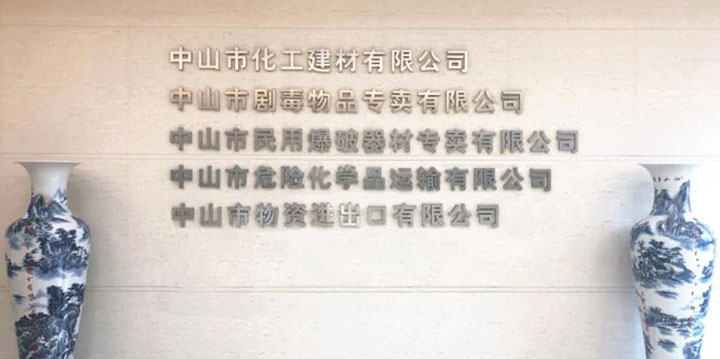
激活长青基因
Zhongshan Material Group Limited
建设百年名企
c7最新(中国)官方网站是一家集现代商贸与生产性服务业的流通企业集团。
c7最新(中国)官方网站以发展现代流通产业、服务经济建设为己任,经过多年跨越式发展已拥有23家全资公司、6家合资公司,业务涵盖钢材贸易、剪切加工、仓储物流、二手车交易市场、机动车检测、报废车回收、金属回收、剧毒物品、民用爆破器材、危险品运输、普化产品、进出口、典当、投资等多元业务,形成了专业化经营、多元化发展、市场化运作、信息化管理、内外贸一体化发展的经营模式。
c7最新(中国)官方网站一直坚持创新改革不停步,坚持商贸流通主业不动摇,提高经营质量不松懈,保持企业稳步向前发展,我们拥有一支经受完全市场竞争考验的优秀经营管理团队,并将继续秉承“企业与时代共同前进、企业与客户共创价值、企业与员工共同发展”的核心价值理念,并将继续努力打造在粤港澳大湾区发展中具有一定竞争力的现代商贸流通企业集团,并将继续服务客户、回报社会。
未来,c7最新(中国)官方网站期待在新时期共享经济和混合型经济的大环境下,愿与各方一道继续携手共进,继续保持精诚合作,互惠共赢。

金属材料加工配送业务致力为珠三角地区家电、电子、机械、五金、汽配、灯饰等制造企业提供优质钢材加工、剪切、配送服务。主营品种:热轧钢板、冷轧钢板、镀锌板、镀铝锌板、硅钢片等。
建筑材贸易主营线材、螺纹钢等建筑材料以及高线、拉丝材等工业材料,代理粤钢、鞍钢、马钢、迁安、韶钢等钢厂产品,二级分销与终端销售相结合,成为本地区大型优质房地产商、建筑企业和重点工程项目的主要供应商。


化工危化品经营服务,主要为客户提供危险化学品、民用爆破物品及化工产品销售和配送服务。
危险化学品运输业务主要是为客户提供专业的危险化学品运输服务,目前拥有专业危险品运输车辆,并配备有专业的司机和押运从业人员。


经国家外经贸部批准,中山市物资进出口有限公司拥有对外加工和转口贸易自营进出口权,主要经营各类商品、技朮的进出口业务及销售黄金、白银等。
集团属下拥有广东中物旧机动车交易中心、中山市鸿源机动车交易市场、中山市聚源机动车交易市场、中山市合源机动车交易市场有限公司4个大型二手车交易服务专业市场,并为客户提供:二手车买卖、过户办证、鉴定评估;机动车年审;商铺出租等服务;市场配套汽车金融、汽车维修、保险代理、号牌安装等机动车辆业务办理综合性服务。


集团属下物资再生利用公司,是一家具有认定资格的报废汽车回收拆解企业。公司在小榄、沙溪、黄圃、三乡和开发区设立回收网点,提供“上门收车一条龙”、“免费上门拖车”和“一站式办证”服务。
集团属下金属回收公司是由中山市环保部门核准的具有电子废弃物拆解利用处置资质的企业,公司一直秉承“保护环境,资源回收,变废为宝”的经营宗旨以及“合法、诚信、高效”的服务原则。


集团属下c7最新(中国)官方网站是2005年经国家商务部、公安部批准成立的专业融资机构,是广东省典当行业协会常务副会长单位,连续多年省行业协会纳税前十名称号和被市工商部门评为守合同重信用企业。公司注册资本5000万元,设立总部(南区)和城区分公司两个营业点,专业从事房地产抵押、机动车及其他动产质押、财产权利质押等典当贷款业务,贷款手续简便、审批快捷、利率优惠、用款灵活。公司还有货真价实、丰富多样的绝当物品(车辆、贵金属、名表、珠宝、玉石、奢侈品等销售,并为客户提供房产、车辆和民品的鉴定评估和融资咨询等服务。
集团属下现有出租物业:1、中山市南区城南一路210-216号化工商厦地铺及写字楼单元5000㎡。2、中山港仓库库房2000㎡,露天场地9000㎡。3、坦背4S店。4、彩虹大道4S店。5、广州维多利写字楼2单元。6、岐港路地铺2300㎡。7、港口镇沙港东路6号工业用地55亩。

地址:中山市港口镇沙港东路6号
电话:0760-88624420 传真:0760-88631014
地址:中山市港口镇沙港东路6号
电话:0760-88637859
地址:中山市港口镇沙港东路6号
电话:0760-88638114 传真:0760-88615053
地址:中山市港口镇沙港东路6号
电话:0760-88633402 传真:0760-88637574
地址:佛山市顺德区乐从镇乐从居委会细海工业区9-1号地F西2号
电话:0757-28978931 传真:0757-28978930
地址:中山市港口镇沙港东路6号
电话:0760-89922600 传真:0760-89922606
地址:中山市南区城南一路210-216号中山化工商厦六楼
电话:0760-88635242 传真:0760-88612409
地址:中山市南区城南一路210-216号中山化工商厦六楼
电话:0760-88639177 传真:0760-88612409
地址:中山市南区城南一路210-216号中山化工商厦六楼
电话:0760-88635242 传真:0760-88612409
地址:中山市南区城南一路210-216号中山化工商厦六楼
电话:0760-88612698 传真:0760-88612698
地址:中山市南区城南一路210-216号中山化工商厦六楼
电话: 0760-88635307 传真:0760-88638704
地址:中山市南区城南一路210-216号第4-5卡
电话:0760-23333382 传真:0760-23333221
微信公众号:恒源典当
微博:中山市恒源典当有限公司
地址:中山市石岐区孙文东路46号1-2卡商铺
电话:0760-88888884 传真:0760-89989937
微信公众号:恒源典当
微博:中山市恒源典当有限公司
地址:中山市火炬开发区大岭工业区22号
电话:0760-88888331 传真:0760-85319760
微信公众号:中山二手车综合服务平台
地址:中山市西区广珠公路东北侧长洲加油站对面
电话:0760-88888331 传真:0760-85319760
微信公众号:中山二手车综合服务平台
地址:中山市小榄镇永宁菊城大道西88号
电话:0760-88888331 传真:0760-85319760
微信公众号:中山二手车综合服务平台
地址:中山市三乡镇新圩村沙坦公路818号
电话:0760-88811868
微信公众号:中山市合源机动车交易市场
地址:中山市西区鸿源机动车交易市场内
电话:0760-88888331 传真:0760-85319760
微信公众号:中山二手车综合服务平台
地址:中山市东升镇富民大道富德路5号A区
电话:0760-88631633 网址:www.zsbfc.com.cn
微信公众号:中山报废车辆拆解中心
地址:中山市东升镇利生社区观栏“厚丰围”
电话:0760-88631633
c7最新(中国)官方网站 版权所有 office@zsmaterial.com0760-88624420 中山市港口镇沙港东路6号
备案号:粤ICP备19046986号
标识号为:粤工商备P201711001285